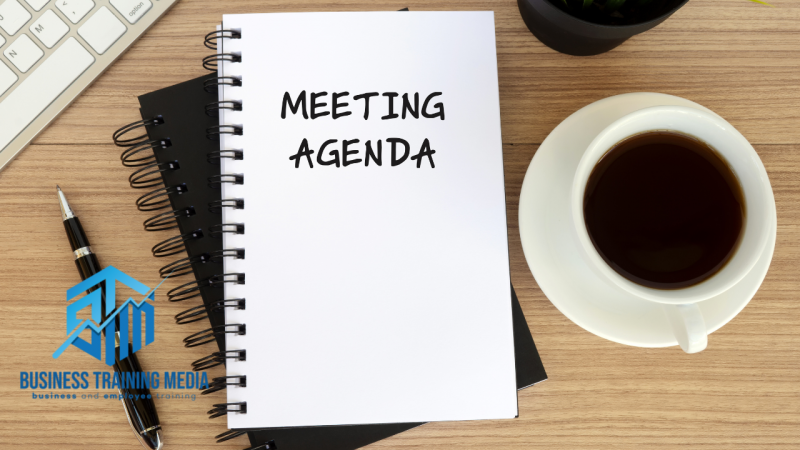
How to Create a Meeting Agenda That Works
By Business Training Media
Meetings are an integral part of any organization. They provide a platform for people to come together, share ideas, and make decisions that can have a significant impact on the organization's success.
Meetings can take many forms, ranging from informal one-on-one conversations to large-scale conferences with hundreds of attendees. Despite their different forms, all meetings have one thing in common: they require a clear and concise agenda to be effective.
A meeting without an agenda can quickly devolve into a disorganized discussion that wastes time and achieves little. Attendees may become frustrated, disengaged, and even resentful of the meeting's organizers. In contrast, a well-crafted meeting agenda can help set the tone for a productive meeting. It provides a clear roadmap of what will be discussed, how much time will be devoted to each topic, and who will be responsible for leading the discussion.
A good agenda helps attendees prepare for the meeting, come prepared with necessary information, and stay focused during the meeting, increasing the chances of a successful outcome. In short, a well-designed meeting agenda can make all the difference between a productive, efficient meeting and a frustrating, unproductive one.
Here are eight tips for creating a meeting agenda that works.
1. Start with the purpose of the meeting
The first step in creating a meeting agenda is to determine the purpose of the meeting. Ask yourself, what is the main goal of the meeting? Is it to brainstorm ideas, provide updates, or make a decision? Once you have identified the purpose of the meeting, you can start to structure the agenda.
2. Identify the attendees
The next step is to identify the attendees. Who needs to be present at the meeting? Make a list of the attendees and send out invitations to ensure everyone is aware of the meeting and the purpose.
3. Create an outline
With the purpose and attendees identified, it is time to create an outline for the meeting agenda. The outline should include the main topics to be discussed, the time allotted for each topic, and who will be leading the discussion.
4. Prioritize agenda items
Not all agenda items are created equal. Prioritize the agenda items by placing the most important and urgent items at the beginning of the meeting. This ensures that the most critical topics are discussed first when everyone is still fresh and engaged.
5. Include time for questions and feedback
It is essential to include time for questions and feedback in the meeting agenda. This allows attendees to provide input and express their opinions. Make sure to allot enough time for this, as it is a crucial part of the meeting.
6. Share the agenda beforehand
It is essential to share the meeting agenda with attendees beforehand. This allows them to prepare for the meeting and come ready with any necessary information or input. It also helps keep everyone on track during the meeting.
7. Stick to the agenda
During the meeting, it is essential to stick to the agenda. This ensures that all the important topics are covered and the meeting stays on track. If new topics come up, they can be added to a future meeting agenda.
8. Review and follow up
After the meeting, it is essential to review the agenda and ensure that all topics were covered. Follow up with attendees to see if they have any questions or feedback. This can help improve the next meeting agenda and make the meetings more productive in the future.
Finally, a well-crafted meeting agenda can make all the difference in the success of a meeting. By starting with the purpose of the meeting, identifying the attendees, creating an outline, prioritizing agenda items, including time for questions and feedback, sharing the agenda beforehand, sticking to the agenda, and reviewing and following up after the meeting, you can create a meeting agenda that works.
Remember, the agenda should be a tool to help facilitate the meeting, not an obstacle to it. By following these tips, you can ensure that your meetings are productive and effective.
Copyright 2023: Business Training Media
Join Our Free HR Training Solutions eNewletter
Join our free HR Training Solutions eNewsletter today to stay up-to-date on the latest industry trends, training and development programs, best practices, and expert insights. Gain valuable knowledge, enhance your skills, improve your organization, build productive teams and elevate your career. Don't miss out on this invaluable resource – sign up now for our free HR Training Solutions eNewsletter!





